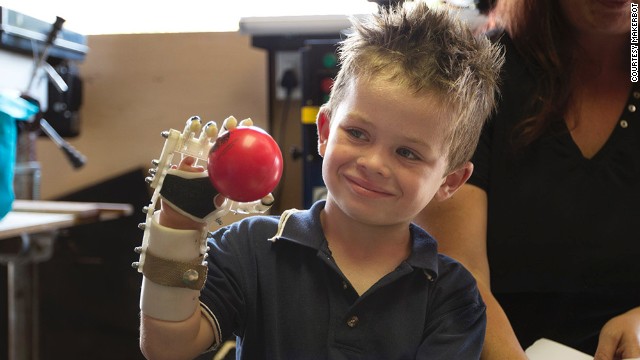What do we really mean by a disability ? not being able to do something . The definition of disability would vary in different times and circumstances. The world we live in today with 3D printing technology now at our fingertips , many disabilities have been reduced to a nuisance.
Every year thousands of people lose limbs in different accidents or children are born without them . With commercially made prosthetics costing roughly somewhere between 5,000-50,000$ for a limb , it has been previously inaccessible to a large percentage of these people forced to live with the physical and emotional aftereffects not to mention the associated term ‘disability’. Crowdfunding has already helped people to gather the required money for artificial limbs using platforms like YouCaring.com, but what do you do if you cannot take your case to the powerful crowdfunding platforms? .Using crowdfunding is a solution that would potentially benefit a very small percentage of all the people requiring artificial limbs. What needed to be done was to devise a solution that is easily available to everyone but more importantly inexpensive.
Even though the latest technology in artificial prosthetics using 3D printing often doesn’t lessen the emotional pain aspect but it can help reduce the financial burden to a great extent with an artificial hand now costing as little as 50$ with 3D printed parts and largely available screws and connectors .They are also easily accessible in the form of open source code. There are many added advantages to the idea like the speed at which you could get the limb which may take as little as a day or the versatility meaning these limbs can easily be customized to suit the user’s daily requirements. One challenge that previously existed with the conventional limbs was making them for children of growing age where a physically unique kid would very quickly outgrow an artificial limb and replacing an artificial limb to keep up with the pace of growth of such children until they reached maturity could be and extremely expensive process.
Many companies some of which are non-profit are working towards what we may call becoming digital humanitarians. The nonprofit company, Limbitless Solutions is creating functional arms for children (and others) who need them. Another organization, called e-NABLE, is doing some impressive work by creating a collaborative approach to get leaders in medicine, industry, and public policy to create an event that will not only educate professionals, but include donated prosthetics to children with upper limb disabilities. They are working to create open source hand design files to print, as well as heart-warming stories of the children, adults and military veterans who have been gifted these 3D printed hands from a global network of volunteers.
The founders of a robotics startup Exiii from Tokyo have gone a step ahead and unveiled the designs for their prototype which a basic mechanical hand and forearm made from materials that only cost about $200. It’s also open source. The Exiii Hackberry, as it’s called, has a flexible wrist, partially motorized fingers and low-cost parts with an infrared distance sensor attached to inner forearm and plugged it in to the Hackberry. The sensor measures the distance to the skin, so when a muscle contracts, it detects a change and sends a signal to the Arduino board. The sensor can be attached on a user’s upper arm, for instance, so that flexing biceps would activate the hand.
Getting technology to help medicine has effected and made easier lives of many. This is a major leap forward for mankind yet this is only where we start to turn disability into ability and start looking beyond it.
The endless possibilities of 3D prosthetic printing
Comments (0)
Views (1238)
Category ()
Admin
Please login to Comment




No Comment Found